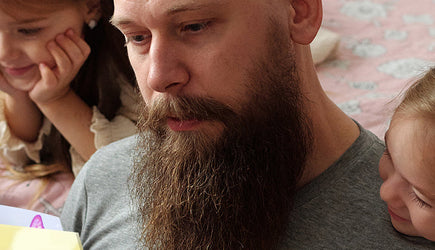10% Off Your First Order
Be first to know about new stories and offers

Storytelling has always been a cornerstone of early childhood growth, allowing young listeners to practise language skills, explore emotions, and expand their imagination. When a tale features a child’s name, family members, or favourite activities, it instantly becomes more than words on a page—it turns into a personal journey. A US study reported that reading comprehension scores jumped by over forty per cent among pupils whose reading books included personalised elements. That same research noted that preschoolers retained more new words in personalised sections than in generic portions of a story. This dual benefit of improved understanding and vocabulary growth makes storytelling a powerful tool in any young child’s development.
Beyond boosting language, personalised stories invite children to see themselves as protagonists. When a tale mirrors a child’s real-world surroundings, whether it’s a familiar street corner or a beloved pet, the listener experiences excitement and ownership of the narrative. Parents and carers often notice more laughter, questions, and emotional responses when a child’s own details appear in the text. These moments of wonder lay the groundwork for a lifelong love of books.
Creators such as Story Bug have taken this concept to heart. Story Bug designs books that place each child at the centre of their own adventure. Every volume doubles as a keepsake, with artful illustrations and narratives crafted to spark creativity and promote self-expression. The mission at Story Bug is to celebrate each child’s uniqueness by weaving diverse backgrounds and abilities into every story. Their approach nurtures empathy in young readers and empowers them to view themselves as heroes capable of overcoming challenges.
By choosing a personalised bedtime story over a generic title, families build a habit of shared reading that strengthens emotional bonds. These early interactions teach children to focus, listen, and respond. Over time, reading together evolves into a treasured ritual—one that establishes confidence in new readers and fosters open communication between carers and children. In the context of a first Christmas, a custom storybook becomes more than just a gift; it becomes a chapter in the family’s festive traditions.
At its core, a personalised storybook adapts standard storytelling elements—characters, settings, plots—to include the details that matter most to the child. The concept goes beyond simply substituting a name in the main character; it often integrates family members, hometown landmarks, favourite toys, and even pets. When done thoughtfully, these custom touches bring the plot to life in a way that generic stories cannot match.
Customisation typically follows a simple process. A parent or gift-giver fills out a questionnaire that asks for the child’s name, nickname, age, appearance traits, family structure, and personal interests. Some providers also request photographs or brief notes on favourite holiday traditions. Once the data is submitted, talented writers and illustrators craft a narrative that weaves the supplied details into a cohesive adventure.
Personalised books come in a variety of styles. Some publishers favour a classic approach, with gentle watercolour artwork and rhyming text reminiscent of old fairy tales. Others go for a modern look, featuring vivid digital illustrations, interactive elements, and even sections where the child can draw or write inside the pages. The choice of style often depends on the child’s age and family aesthetic. A minimalist design with clean lines may appeal to a toddler’s curiosity, while a richly detailed scene can captivate an older preschooler’s eye for complexity.
These custom books offer more than just visual appeal. They create what educators call “affective hooks”—emotional connections that link new vocabulary or moral lessons to the child’s own experience. When a story describes a rescue mission at the local park or a snowy day in front of the family fireplace, readers process the plot in the context of real memories or expectations. That emotional bridge makes it easier for children to grasp abstract ideas, from sharing toys to expressing kindness.
Including cultural or regional elements adds another layer of significance. A custom book can introduce the child to hometown festivals, local wildlife, or traditional family recipes. This approach helps young readers recognise the value of their heritage and fosters pride in their roots. In turn, these themes encourage conversations between children and other family members, reinforcing social bonds and passing down shared customs.
Overall, personalised storybooks transform reading from a passive activity into an engaging, multi-sensory adventure. They make each turn of the page feel like a discovery of one’s own story. For a baby’s first Christmas, a tale that features the bright-eyed newborn gazing at twinkling lights or spotting a Father Christmas hat with their own name on it becomes an heirloom in the making.

Choosing the Right Theme
Select a theme that captures the magic of a first Christmas personalised book. Popular ideas include a visit from Father Christmas himself, a sparkling winter wonderland, or a cosy family gathering filled with decorations, carols, and festive treats. Father Christmas stories can highlight anticipation and surprise, while a winter woodland theme can introduce animals like reindeer and owls. A family-focused tale may centre on traditions such as tree trimming, biscuit baking, or the sharing of handmade gifts.
Incorporating Family Traditions
Weaving in personal holiday customs makes the story feel deeply familiar. Ask grandparents for anecdotes about their own past celebrations or incorporate a beloved family recipe into the narrative. If your household has a tradition of reading a specific poem or singing a particular carol on Christmas Eve, include a scene where the child joins in. These little nods to real-life practices turn the book into a living record of family heritage.
Selecting Illustrations and Style
Illustration style shapes the reader’s emotional response. A gentle, pastel palette with soft edges can create a dreamy, peaceful mood, perfect for a newborn’s first glimpse of holiday lights. Bright, bold colours spark excitement and wonder for toddlers just discovering new objects and shapes. Consider whether the illustrations should be realistic or whimsical. Realistic art can help children connect names and places to their daily life, while playful, stylised drawings spark imaginative leaps.
When choosing a custom publisher, review sample pages to ensure the artwork matches your vision. If the child has dark hair or wears glasses, check that the illustrator replicates those features accurately. Personal touches like the family pet appearing in the background or a familiar sofa in a lounge scene add authenticity. Some providers offer colour options for skin tone, hair style, and clothing to make sure the representation feels genuine rather than generic.
A well-chosen theme and artwork style work together to make the reading experience memorable and meaningful. They create a visual and emotional setting that resonates with holiday cheer and family love. That resonance turns a simple book into a cherished gift that a child will request again and again during each year’s festive season.
Adding Personal Touches
The finest custom storybooks go beyond basic name swapping. They might include the child’s birth date, the street where the family lives, or the name of a favourite teddy bear. Some creative options let you upload photos—imagine a page where Father Christmas hands the child a gift wrapped in the same bow as the one under your own Christmas tree. Others offer handwriting inserts, where a parent’s own cursive appears in a special message at the end of the tale.
Creative Ways to Present the Book
Presentation adds to the excitement of gifting. For a first Christmas custom storybook, think about packaging that complements the theme. A personalised story tucked inside a Christmas Eve box alongside festive pyjamas, a plush reindeer, and a small ornament turns opening the gift into a full sensory experience.
Wrap the book in seasonal paper that hints at the story. For example, choose paper decorated with snowflakes for a winter-wonderland tale or candy-cane stripes for a Father Christmas-themed adventure. Tie a festive ribbon around the package and attach a handwritten tag that references a line from the book, “Ready to find that hidden sleigh?”, to spark curiosity before the first page is opened.
If your family observes an advent ritual, include the book as a day’s special treat. Place it behind a door labelled “Day 24” and let the child discover a new story that builds holiday anticipation. Alternatively, present the book at breakfast on Christmas morning, stacked under a plate of gingerbread biscuits or alongside a mug of warm milk with a sprinkle of cinnamon.
Adding a small keepsake, like a fabric bookmark featuring the child’s name or a mini photo ornament, turns a simple read into a celebration of first milestones. These thoughtful touches make the storybook not just a reading activity but an event, complete with memories that last long after the holiday season ends.
Personalised storybooks offer more than the immediate delight of seeing one’s name in print—they lay the foundation for lifelong skills. As children follow the hero through challenges and triumphs, they practise recalling plot details and character motivations. That process improves memory and sequence recall, as one study notes that storytelling activities help young learners remember settings, characters, and events more accurately (harmonypeds.com).
Over time, these books become heirlooms. Parents might read the same volume each year, noting how the child’s reactions evolve. Grandparents often treasure these custom tales, passing them down to younger family members to share a sense of continuity and tradition.
Moreover, stories that include problem-solving scenarios help nurture analytical thinking. When a character faces an obstacle—like finding missing ornaments or rescuing a lost puppy—young readers learn to anticipate solutions and consider consequences. Research highlights that children who engage with narrative challenges develop stronger decision-making skills and resilience (scottsdaleawes.com).
In the context of a first Christmas, a custom storybook serves a dual purpose: it’s both a magical holiday gift and a developmental tool. It supports language growth, cultural awareness, emotional bonds, and cognitive skills, all wrapped in festive illustrations and heartfelt prose. Year after year, the book remains a symbol of that inaugural celebration, reminding families of the wonder felt on that very first Christmas morning.
 Personalized Storybooks | Psychology Behind Personal Names
Children Seeing Their Name in a Story Kids light up when they hear their own name in a story. Personalizing a tale makes it feel special. It pulls them in. Calls to mind their own world. A name can spark...
July 3, 2025
Personalized Storybooks | Psychology Behind Personal Names
Children Seeing Their Name in a Story Kids light up when they hear their own name in a story. Personalizing a tale makes it feel special. It pulls them in. Calls to mind their own world. A name can spark...
July 3, 2025
 Personalized Storybooks vs Traditional Storybooks: A Deep Dive
Reading has long been a cornerstone of early learning. Parents and educators debate which format best supports cognitive growth and literacy skills. Two clear contenders are traditional storybooks and personalized storybooks...
June 27, 2025
Personalized Storybooks vs Traditional Storybooks: A Deep Dive
Reading has long been a cornerstone of early learning. Parents and educators debate which format best supports cognitive growth and literacy skills. Two clear contenders are traditional storybooks and personalized storybooks...
June 27, 2025
 Easter Memories That Bloom Forever: Beyond the Chocolate Eggs
Easter is a season of sweet treats, joyful gatherings, and the delightful thrill of egg hunts. But what if you could capture the magic of this special time..
March 3, 2025
Easter Memories That Bloom Forever: Beyond the Chocolate Eggs
Easter is a season of sweet treats, joyful gatherings, and the delightful thrill of egg hunts. But what if you could capture the magic of this special time..
March 3, 2025